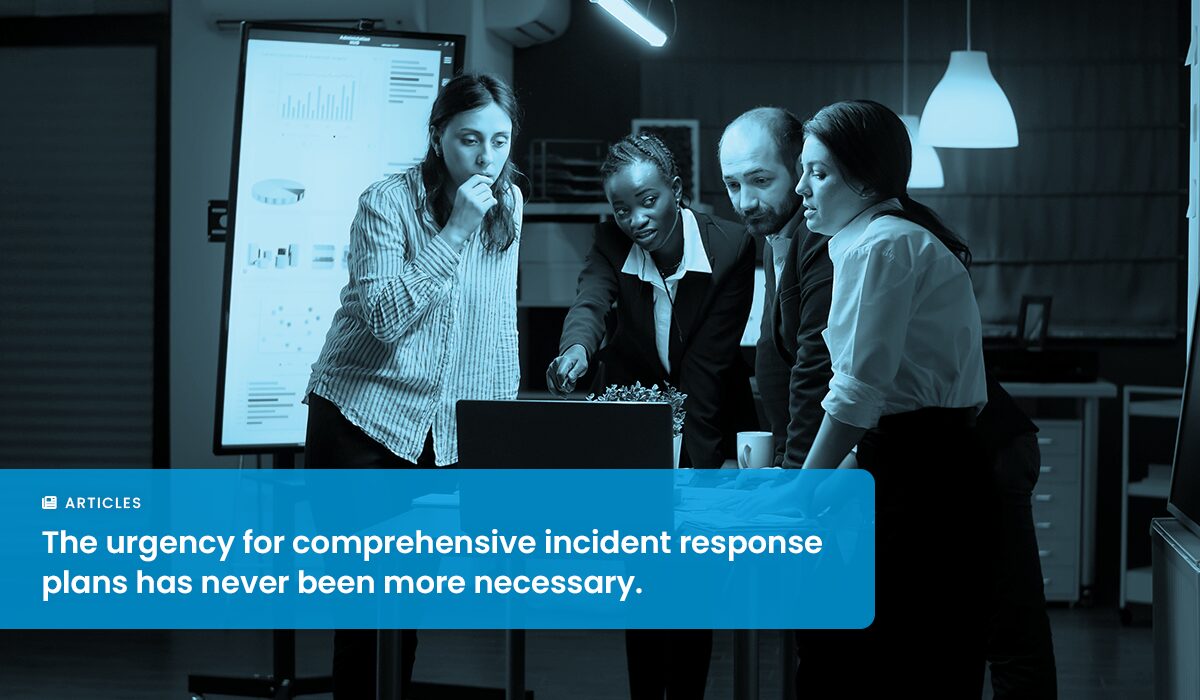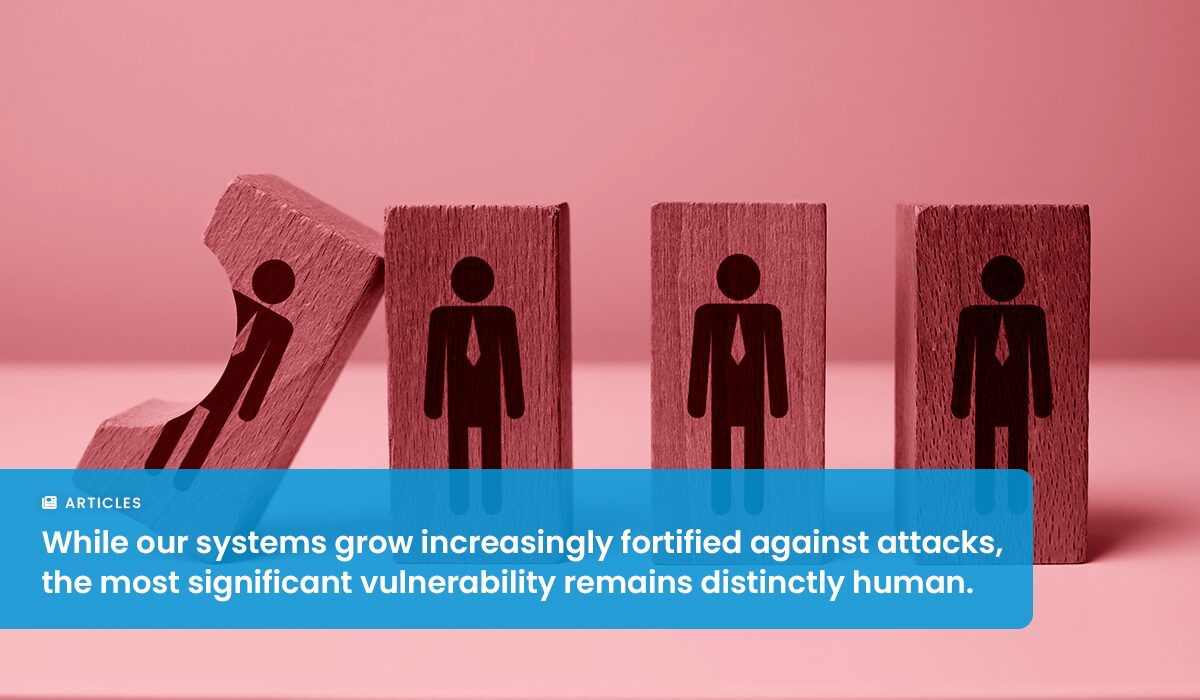With the average cost of downtime now reaching approximately $9,000 per minute, the urgency for comprehensive Incident Response Plans (IRP), Disaster Recovery (DR), and Business Continuity Plans (BCP) has never been more necessary. In the face of evolving cybersecurity threats, natural disasters, and operational disruptions, these pillars are crucial for safeguarding the financial, operational, and reputational integrity of modern organizations. They transcend beyond mere risk management strategies to become essential components for ensuring organizational resilience in today’s digital landscape.
Understanding the Fundamentals
The resilience of an organization in the face of disruptions relies heavily on its ability to effectively manage incidents, recover from disasters, and ensure continuity of operations. Here’s a closer look at IR, DR, and BCP.
Incident Response Plan (IRP)
Incident Response Plans play a crucial role in promptly addressing and mitigating cybersecurity threats to minimize potential damage.
- Preparation: The foundation of IR is in preparing for incidents before they occur, which includes training staff, establishing communication protocols, and setting up detection systems.
- Key Components: Incident Detection Systems (IDS), employee training programs, communication plans
- Detection and Analysis: Quick identification and analysis of an incident are essential for a timely response. This involves monitoring systems and networks for signs of a security breach.
- Key Components: IDS, Security Information and Event Management (SIEM), threat intelligence feeds
- Containment, Eradication, and Recovery: Once an incident is detected, the focus shifts to containing the breach, removing the threat, and restoring systems to normal operations.
- Key Components: Quarantine protocols, malware removal tools, backup and restore procedures
- Post-Incident Activity: After addressing the immediate threat, organizations should review and update their IR plans based on lessons learned to strengthen defenses against future incidents.
- Key Components: Incident debriefs, update cycles for security policies, ongoing training initiatives
Disaster Recovery (DR)
Disaster Recovery focuses on quickly restoring IT and operational capabilities after a natural disaster, whether manmade or natural, to minimize downtime and data loss.
- IT Infrastructure Focus: DR plans are specifically designed to restore IT operations by recovering data, servers, and network functionality after a disaster.
- Key Components: Data backups, recovery sites, replication of data and applications
- Minimizing Downtime: The primary goal is to reduce the time systems and services are unavailable, minimizing operational and financial impacts.
- Key Components: Recovery Time Objectives (RTO), Recovery Point Objectives (RPO), automated failover mechanisms
- Data Loss Prevention: Protecting against data loss is a critical component, ensuring that all data can be recovered accurately and completely.
- Key Components: Regular backups, off-site storage solutions, data encryption
- Testing and Maintenance: Regular testing of the DR plan is essential to ensure it will be effective in an actual disaster scenario.
- Key Components: Scheduled disaster simulations, plan reviews and updates, testing of backup systems
Business Continuity Planning (BCP)
Business Continuity Planning ensures that essential business operations can continue during and after a disaster.
- Beyond IT: BCP encompasses not only the restoration of IT functions but also ensures that all critical business operations can continue or quickly resume after a disruption.
- Key Components: Business Impact Analysis (BIA), identification of critical operations, alternative business operation strategies
- Holistic Organizational Protection: BCP aims to protect all aspects of a business, including supply chains, personnel, assets, and facilities.
- Key Components: Vendor management plans, emergency response plans, employee safety protocols
- Ensuring Organizational Survival: The ultimate goal is to maintain the viability of the business through any interruption, preserving customer trust and company reputation.
- Key Components: Communication plans, financial stability measures, brand management strategies
- Continuous Improvement: BCP is a dynamic process that requires regular updates and revisions to adapt to new business developments and emerging threats.
- Key Components: Regular review cycles, feedback mechanisms, continuous training programs
Real-World Necessity of IR, DR, and BCP
Recent events, including cyberattacks on corporations like MGM and Change Healthcare, along with natural disasters, spotlight the essential role of strategic planning in averting financial, operational, and reputational losses. Take a look at these recent examples to see just how necessary IR, DR, and BCPs are for modern business.
MGM Resorts
The September 2023 cyber-attack on MGM Resorts, executed by the ALPHV subgroup Scattered Spider, highlights the critical need for effective incident response plans. The attack caused extensive operational disruptions and led to the theft of sensitive customer data, such as names and contact information, with some cases involving Social Security and passport numbers. This resulted in a financial loss of approximately $100 million for MGM Resorts and prompted a series of remedial measures including enhanced system security and customer notifications.
MGM’s quick actions to secure its systems, collaborate with cybersecurity experts and law enforcement, and support affected customers through free credit monitoring services demonstrate the vital role of prepared and responsive incident response plans in minimizing cyber-attack impacts, maintaining customer trust, and ensuring business continuity.
Change Healthcare
In February 2024, Change Healthcare, a major healthcare technology company in the U.S., experienced a cyber-attack that disrupted several of its systems and services, while also causing critical delays in patients receiving care and prescriptions. The company took immediate action to protect its partners and patients by disconnecting its systems to prevent further impact. This incident highlights the necessity of business continuity planning in the healthcare sector, where disruptions can have cascading effects on revenue cycles, healthcare technologies, and clinical authorizations across the healthcare sector.
Natural Disasters
Events such as hurricanes, wildfires, and floods in recent years have demonstrated time and again that businesses must prepare for natural disasters. This involves not only securing IT infrastructure but also ensuring that all aspects of a business can continue to operate or quickly resume after a disaster strikes. Having a BCP in place is crucial for minimizing downtime and financial loss while safeguarding employees and assets.
Conclusion
The importance of IR, DR, and BCP in ensuring operational resilience cannot be overstated. In an era where threats loom large and the costs of unpreparedness are even larger, these plans are not just strategic assets; they are necessities for safeguarding the future of organizations. Whether you’re reassessing your current plans or starting from scratch, the journey towards resilience is one that every organization needs to undertake.
If you need guidance or a review of your existing strategies, explore our Cybersecurity Program Development solutions today or contact us to talk to an expert.
About ArmorPoint
ArmorPoint, LLC is a managed cybersecurity solution that combines the three pillars of a robust cybersecurity program — people, processes, and technology — into a single solution. Designed by cybersecurity experts, ArmorPoint’s cloud-hosted SIEM technology and extended detection and response capabilities enable businesses to implement a highly-effective, scalable cybersecurity program. With customizable pricing available, every ArmorPoint plan offers a dynamic level of managed security services that support the risk management initiatives of all companies, regardless of available budget, talent, or time. ArmorPoint is developed and powered by Trapp Technology, Inc., a Phoenix-based IT managed services provider. To learn more about ArmorPoint, visit armorpoint.com.








